soc
Latest

Qualcomm's latest Snapdragon chips include two with built-in 5G
Qualcomm just outlined the performance landscape for many of 2020's Android phones -- the company has introduced the Snapdragon 865, 765 and gaming-oriented 765G. They should improve performance in categories like AI and 8K video capture (Qualcomm won't share much more until December 4th), but this time around the highest-end chip isn't the star. The upper mid-range 765 series represents Qualcomm's first systems-on-a-chip with integrated 5G, saving them from using separate, power-hungry modems to take advantage of next-gen wireless. That could extend battery life, of course, but it should also make 5G handsets more affordable.
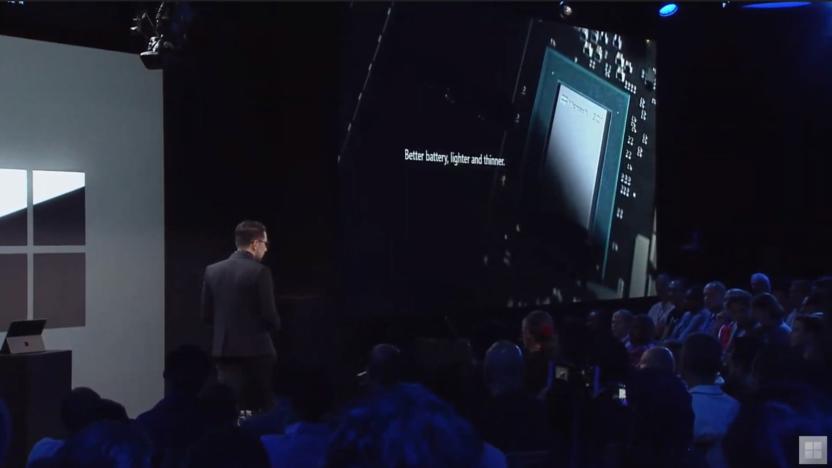
Microsoft's SQ1 is a custom ARM chip for the Surface Pro X
ARM chips in laptops can give you battery life, slimness and connectivity, but power? In Windows laptops, that hasn't been the case. Microsoft has promised that will change with the new ARM-powered Surface Pro X, freshly unveiled at its Surface event today. To make sure it can keep up with Apple's iPad Pro, Microsoft and Qualcomm have developed an all-new ARM processor called the SQ1.

Watch Huawei’s IFA 2019 event in 11 minutes
Even if you somehow managed to get up to watch Huawei's IFA 2019 keynote, what you saw likely didn't give you a jolt of energy. That's because compared to past Huawei keynotes, the company's latest had a more subdued atmosphere. With a US ban that's unlikely to lift anytime soon, Huawei's Richard Yu wasn't his usual boisterous self. Huawei started things off with its new Kirin 990 chipset, which the company says is the world's first mobile system-on-a-chip with built-in 5G modem. Huawei also showed off its new noise-canceling FreeBuds 3 in-ear Bluetooth headphones, two 'new' P30 Pro models designed to cleverly skirt the company's Android ban and a new router.

Huawei's Kirin 990 is a mobile CPU with 5G built in
Let's play a game of technicalities. A few days ago, Samsung announced the Exynos 980, the company's first processor with an integrated 5G modem. In February, Qualcomm also sort of announced it had an integrated 5G mobile platform that supports millimeter wave (mmwave) technology. Today, at IFA 2019, Huawei is unveiling the Kirin 990 5G, which it is calling the "industry's first 5G SoC." The new chipset has, you guessed it, a radio onboard that makes it compatible with the networking standard that's being lit up worldwide, although Huawei's system doesn't support mmwave.

MediaTek's latest phone CPUs are built for gaming
MediaTek's mobile processors are more commonly associated with budget smartphones than gaming, but it's determined to change your mind. The chip designer has introduced a Helio G90 family of processors with performance and features intended with cutting-edge games in mind. Both the G90 and G90T are eight-core chips that use 2.05GHz Cortex-A76 cores for demanding tasks and Cortex-A55 for lighter duties, complete with Mali-G76 graphics (up to 800MHz) and up to 10GB of LPDDR4x memory. Those aren't too special, though -- it's what you won't see that might make the difference.

Qualcomm's Snapdragon 855+ chip is built for gaming and VR
Qualcomm is shaking up its once-a-year approach to updating its flagship mobile processor, and it could be good news for Android phone fans who crave raw performance. The chip maker has introduced an upgraded Snapdragon 855+ that wrings extra performance out of the familiar 855 design. The eight-core Kryo 485 CPU now runs at up to 2.96GHz instead of the earlier 2.84GHz, and the Adreno 640 graphics should deliver a 15 percent speed boost.

MediaTek's 5G chipsets are ready for cheaper next-gen phones
The first wave of 5G devices carried a high premium, but MediaTek is working hard to ensure that budget handsets aren't left behind. The company has announced a new 5G-compatible system-on-chip that will offer decent performance and 5G connectivity to lower-end devices. The elegantly-named Integrated 5G SoC combines MediaTek's M70 5G modem with Arm's Cortex-A77 CPU and Mali-G77 GPU.

Qualcomm launches its first platform made for robots
Qualcomm's interest in robots is definitely more than a passing fancy. It just unveiled RB3, its first all-encompassing platform for robotics. The part is based on last year's Snapdragon 845 system-on-a-chip but is "highly optimized" for drones and other automatons, including AI and sensor processing, support for private LTE networks and tight security. More importantly, it's flexible. Companies can customize it to their heart's content if they're not happy with the off-the-shelf hardware, and choose an OS like Linux or Robot Operating System.
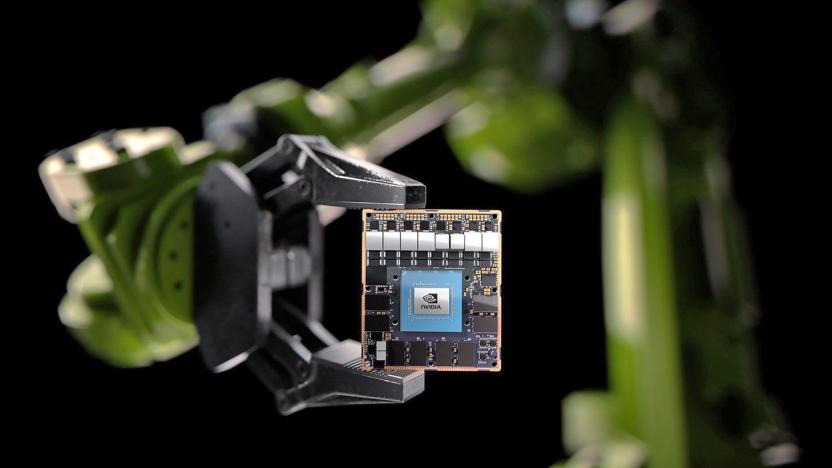
NVIDIA's $1,100 AI brain for robots goes on sale
NVIDIA's plan to power autonomous robots has kicked off in earnest. The company has released a Jetson AGX Xavier Module that gives robots and other intelligent machines the processing oomph they need for their AI 'brains.' You're not about to buy one yourself -- it costs $1,099 each in batches of 1,000 units. However, it could be important for delivery robots and other automatons that need a lot of specialized performance with relatively little power use.
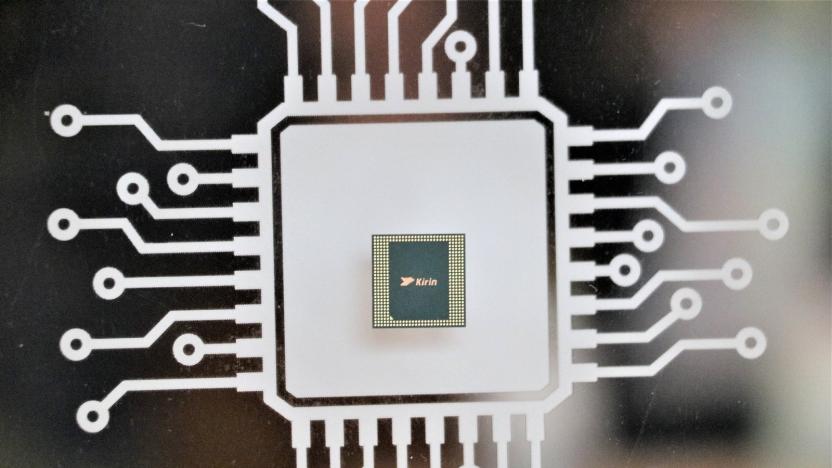
Huawei's 7nm Kirin 980 chip could give Qualcomm reason to worry
The race to deliver a seven-nanometer chip is heated, and Huawei has just proclaimed itself the winner. The company just unveiled its Kirin 980 CPU here at IFA 2018, and says it is the world's first commercial 7nm system-on-chip (SoC). But that's not the new processor's only claim for the record books: The 980 is also the first to use Cortex-A76 cores, dual neural processing units, the Mali G76 GPU, a 1.4 Gbps LTE modem as well as support faster RAM. Whew. That's a lot.

Qualcomm's 7nm Snapdragon chip will be ready for 5G phones
Qualcomm is keeping up its habit of using bleeding edge manufacturing for its mobile processors. The chip designer has confirmed that its "upcoming flagship mobile platform" will include a system-on-a-chip (read: the next Snapdragon) built using a faster, more efficient 7-nanometer process. You won't hear details about the chip itself until the fourth quarter of the year, but it will play nicely with the Snapdragon X50 5G modem -- conveniently, just in time for the arrival of the first mobile 5G networks.

Qualcomm invites us to see its new Wear OS chip on September 10th
Even as wearable devices have become more popular, the hardware backing many Wear OS (formerly known as Android Wear) devices hasn't seen an update since Qualcomm's 2100 SOC arrived in 2016. Now, as promised, a new chip will be unveiled later this year, and this afternoon Qualcomm invited journalists to a reveal event scheduled for September 10th. The invite only had a small smartwatch diagram and the words "It's Time," but Wareable's interview with exec Pankaj Kedia already gave us some ideas about what to expect. The new hardware will be built from the ground up for a wearable device, instead of trying to shrink smartphone technology, and should improve battery life. Plus, it will allow for smaller devices so that everyone can enjoy more stylish options. The big question, of course, is if we'll see the first smartwatches packing Qualcomm's new hardware at the event, like perhaps a Pixel Watch from Google?

New Snapdragon chips bring dual cameras to more mid-tier phones
With certain exceptions, mid-range smartphones haven't been keeping pace with the bells and whistles of higher-end handsets -- you can still expect 'just' a single rear camera and 1080p video recording. Qualcomm might soon fix that. It's launching the Snapdragon 632, 439 and 429 systems on a chip, all of which promise to make dual cameras (plus a few other features) more commonplace.

Intel's all-in-one Xeon chip will speed up car connectivity
Intel's Xeon chips normally reside in distant server rooms or brawny workstations. But that's not ideal for the modern internet, where connected cars, VPNs, streaming video and other tech frequently needs computing power somewhere in between. That's where its newly launched Xeon D-2100 processor might come into play. The system-on-a-chip is designed to bring the performance of a Xeon to the "edge" of a network, where that extra speed might be more effective. It includes up to 18 cores and the requisite hooks for four 10Gbps Ethernet ports, but uses 'just' 60W to 110W of power. In other words: you could tuck some of these into a local office without the demands that normally come with server chips.

Qualcomm's new mid-tier mobile chips are good news for gaming
Qualcomm's latest mid-tier mobile chipsets, the Snapdragon 630 and 660, are designed to give smartphone users more processing power, crisper photos and improved connection speeds over LTE or WiFi, among a few other fresh features. The 630 upgrades the 625 processor, while the 660 follows the 653.
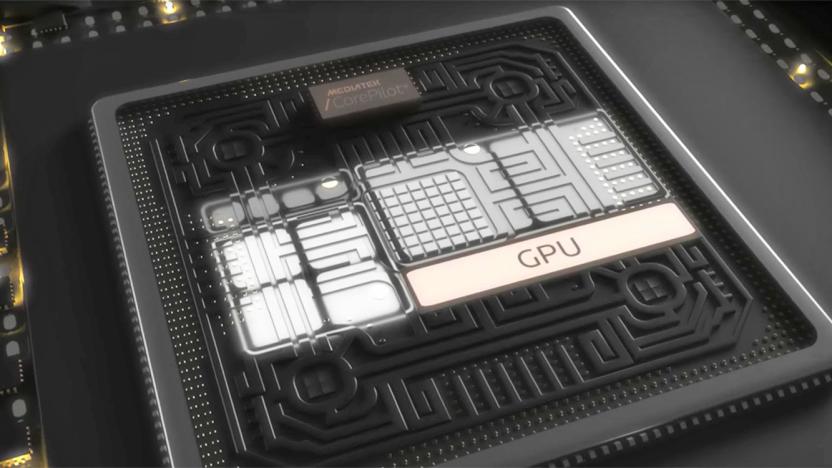
MediaTek's revamped 10-core chip will be hitting phones in Q2
MediaTek's first 10-core chips, the Helio X20 and X25, didn't exactly storm the smartphone market last year, but the company isn't ready to give up just yet. Following MediaTek's initial announcement back in September, the new 10-core Helio X30 is now finally entering mass production, with the first devices expected to arrive some time in Q2 this year. For those who aren't already familiar with this piece of silicon, the X30 is MediaTek's first move into 10nm fabrication, allowing it to join the likes of Qualcomm's Snapdragon 835 and Samsung's Exynos 9 Series 8895.
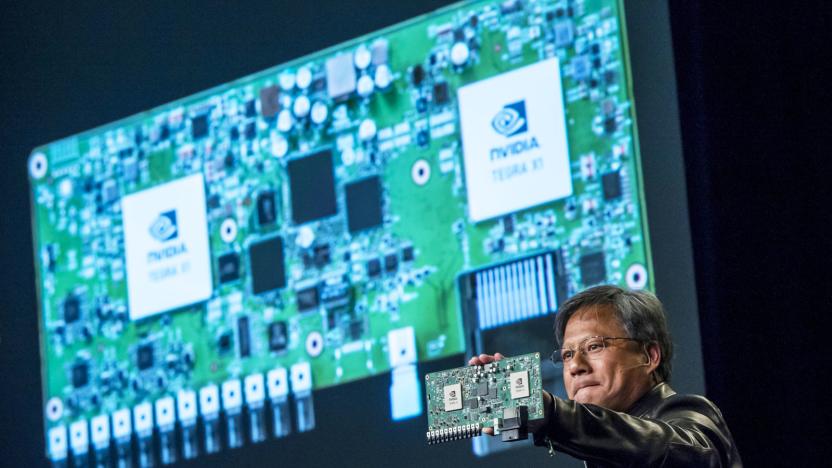
NVIDIA's made-for-autonomous-cars CPU is freaking powerful
NVIDIA debuted its Drive PX2 in-car supercomputer at CES in January, and now the company is showing off the Parker system on a chip powering it. The 256-core processor boasts up to 1.5 teraflops of juice for "deep learning-based self-driving AI cockpit systems," according to a post on NVIDIA's blog. That's in addition to 24 trillion deep learning operations per second it can churn out, too. For a perhaps more familiar touchpoint, NVIDIA says that Parker can also decode and encode 4K video streams running at 60FPS -- no easy feat on its own.

MediaTek's octa-core mobile chip focuses on efficiency
Back in June, MediaTek announced its Helio P10 mobile chipset, which will offer octa-core processing and faster LTE to the masses; today, we know that it'll finally be getting into consumers' hands by way of the Sony Xperia XA. So what's next? The Helio P20, of course. Compared to its predecessor, this new chip -- also featuring eight Cortex-A53 cores and LTE Cat 6 -- is a notable upgrade in terms of power efficiency as it'll be fabricated with a 16nm FinFET+ process instead of the old 28nm. For the same reason, the CPU has been allowed to go beyond the old 2GHz limit to 2.3GHz, and the old Mali-T860 GPU has been switched to ARM's cream-of-the-crop Mali-T880 running at 900MHz. As a bonus, the P20 features the same Imagiq image signal processor as the flagship 10-core X20.
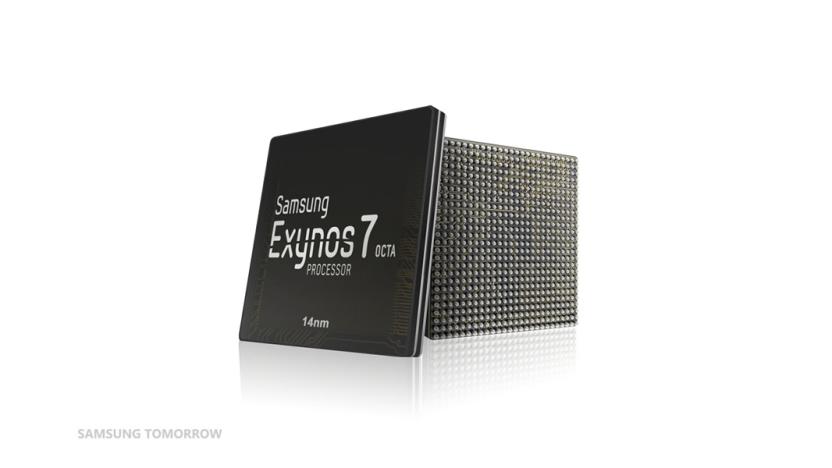
Samsung reveals high-end, low-power chips for midrange phones
Samsung has announced that it's bringing its 14nm Exynos chips to cheaper smartphones. These are smaller chips that are both more efficient and more powerful, and given that the company is already putting the technology to use on competitors' chips (namely, Qualcomm's), it's no surprise to see the chip appear in more phones. Until now, Samsung's only put the FinFET-made (that's 3D-structured) 14nm processors in its best -- and most expensive -- phones. That's about to change.
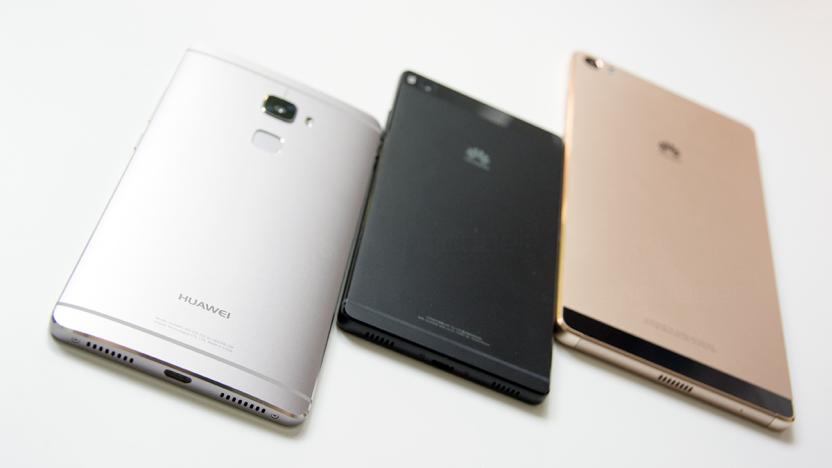
Huawei's next chipset may give competitors a run for their money
Huawei is now Europe's second largest Android brand, according to Kantar, but there's just no time for celebration. Not too long after launching the Huawei Mate S and the Nexus 6P, the Chinese telecom giant is already teasing the launch of the Mate 8 on November 26. Little is known about this new smartphone so far, but it'll likely be using Huawei's upcoming Kirin 950 chipset announced today, which joins the Apple A9 chip to be one of the first to use TSMC's 16nm FinFET Plus process for improved efficiency. Like its predecessor, the Kirin 950 has an octa-core processor but with much improved performance: 4 x Cortex-A72 and 4 x Cortex-A53 instead of the old mid-range offering of just eight Cortex-A53 cores. It also uses ARM's flagship Mali-T880 GPU so gaming should be blast on the phone.









